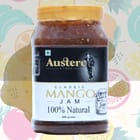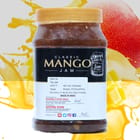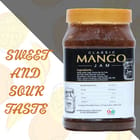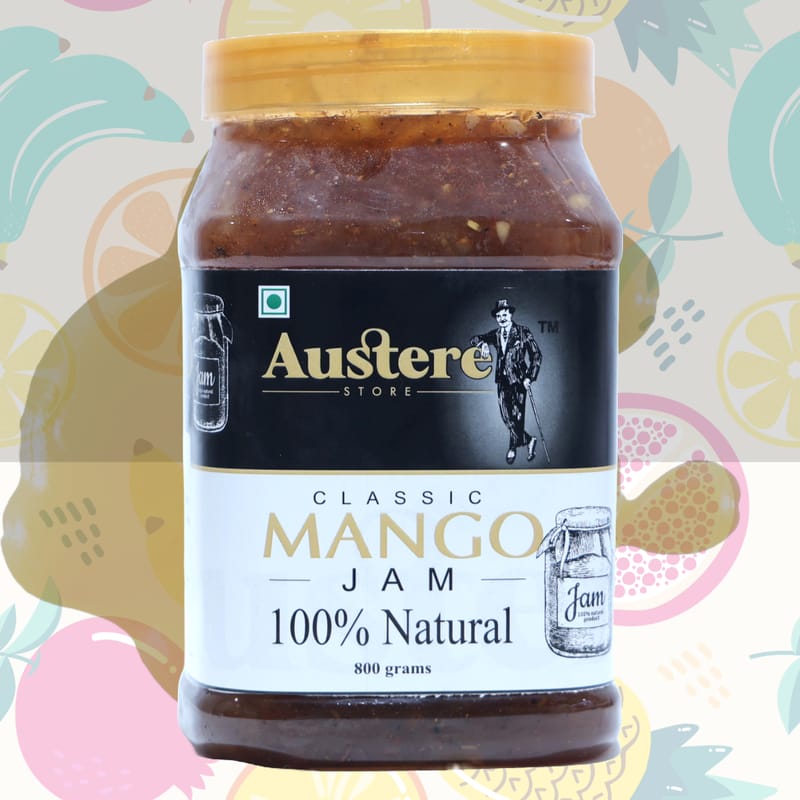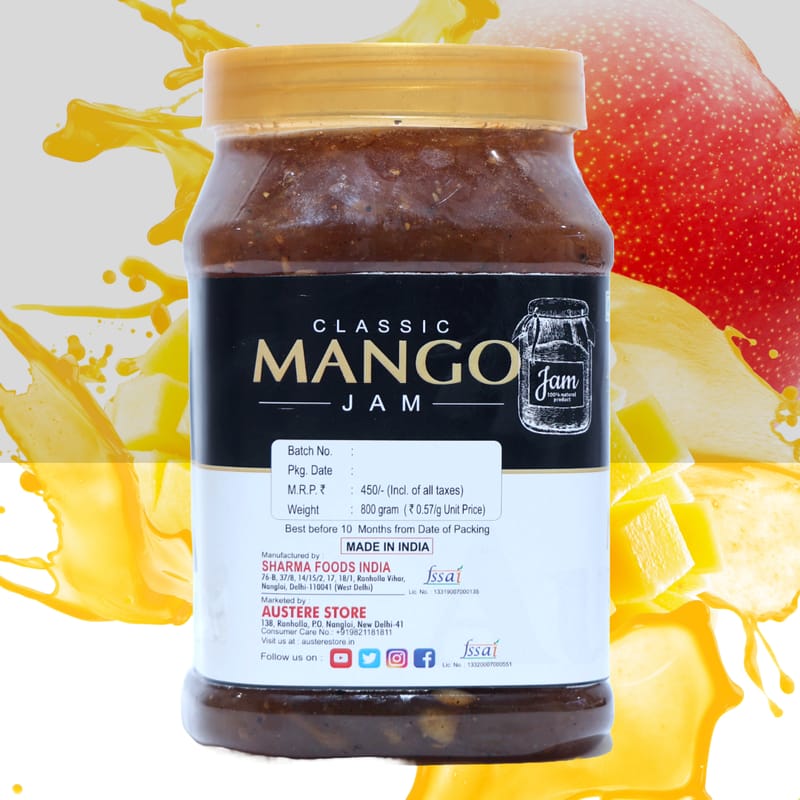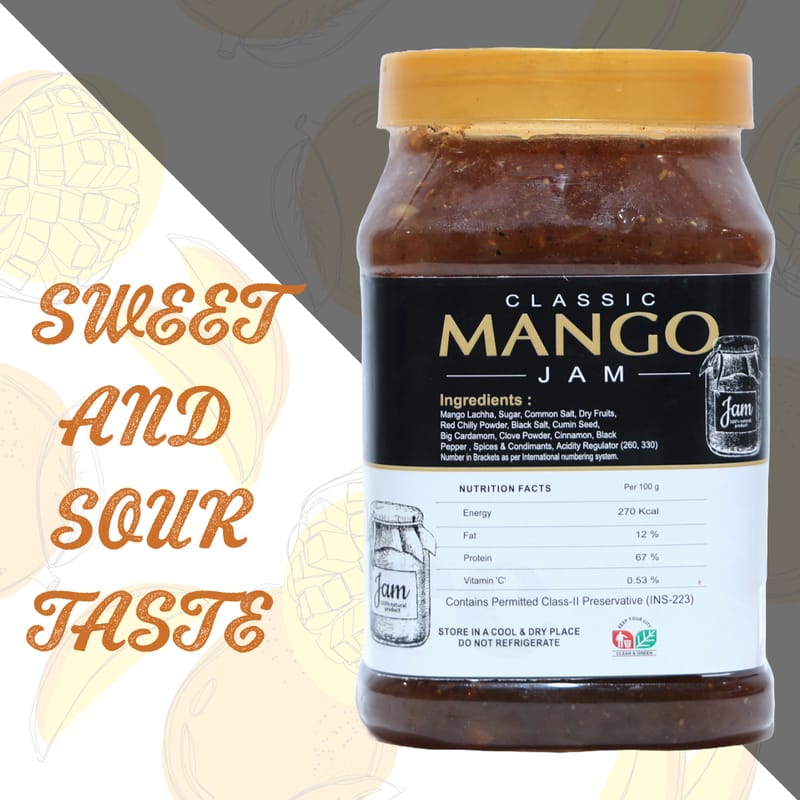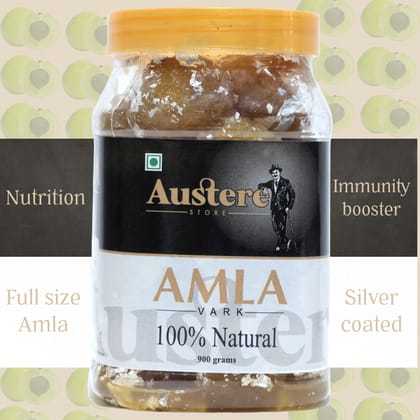AUSTERE STORE
MANGO JAM/ GUJRATI CHUNDA/ AAM KI CHUTNEY
MRP ₹450
| Country of origin | India |
|---|---|
| Brand | AUSTERE STORE |
| Net Quantity | 800 gram |
| Additive info | Preservatives: Sodium Benzoate: Sodium benzoate is a commonly used preservative that helps inhibit the growth of microorganisms and extends the shelf life of the pickle. Acidity Regulators: Citric Acid: Citric acid is a natural acid found in citrus fruits and is used as an acidity regulator. It can contribute to the tanginess of the pickle. Emulsifiers or Stabilizers: Modified Food Starch: Modified food starch can be used as a stabilizer to improve the texture and consistency of the pickle. Coloring Agents: Turmeric Extract or Annatto: While turmeric powder is a natural ingredient used for coloring, some products might use concentrated extracts or annatto to enhance or standardize the color. Flavor Enhancers: Monosodium Glutamate (MSG): In some processed foods, MSG may be used as a flavor enhancer. However, its use can vary, and many pickles do not contain MSG. Vegetable Oil: Edible Oil: While traditional recipes may use mustard oil, commercially produced pickles may use other edible oils. |
| Batch number | A4 |
| Expiry Date | 10 MONTHS |
| Weight | 850 g |
| Dimensions | 12*12*12 |
| Product Dimensions | 12*12*12 |
| Food type | veg |
| Ingredients | Basic Ingredients: Raw Mangoes: Peeled, grated, or finely chopped. The choice of mangoes can influence the flavor. Sugar: Chunda is a sweet pickle, and sugar is a key ingredient for sweetness. Salt: Balances the sweetness and adds flavor. Turmeric Powder: For color and a hint of flavor. Red Chili Powder: Adds a mild to moderate level of heat. The quantity can be adjusted based on spice preference. Asafoetida (Hing): A pinch of asafoetida for its savory flavor. |
| Nutritional information | Calories: The calorie content can vary, but it's generally in the range of 20 to 30 calories per tablespoon. Carbohydrates:Total Carbohydrates: Around 5 to 7 grams per tablespoon. Sugars: The sugar content can vary based on the amount of sugar or sweeteners used. Fat:Total Fat: Varies based on the amount of oil used. It can range from 0.5 to 2 grams per tablespoon. Saturated Fat: The saturated fat content can vary depending on the type and amount of oil used. Protein:Protein content is minimal, typically less than 1 gram per tablespoon. Dietary Fiber:The fiber content is generally low, around 0.5 to 1 gram per tablespoon. Sodium:The sodium content is typically low to moderate, depending on the salt content in the recipe. It can range from 50 to 200 milligrams per tablespoon. Vitamins and Minerals:Chunda made with mangoes may provide small amounts of vitamins A and C. |
| Instructions | Ingredients: Raw mangoes, peeled and grated or finely chopped Sugar Salt Turmeric powder Red chili powder Asafoetida (Hing) Optional: Mustard seeds, fenugreek seeds, cumin seeds, oil, dry fruits, and other spices Instructions: Prepare Mangoes: Wash and peel the raw mangoes. Grate or finely chop the mangoes. Discard the seed. Mix Mangoes with Sugar: In a large mixing bowl, combine the grated or chopped mangoes with sugar. The quantity of sugar can vary based on personal preference and the sweetness level desired. Add Salt and Spices: Add salt, turmeric powder, red chili powder, and a pinch of asafoetida to the mango-sugar mixture. Adjust the quantities of spices based on your taste preferences. Optional Additions: If desired, add optional ingredients such as mustard seeds, fenugreek seeds, cumin seeds, or a small amount of oil for additional flavor. Mix Thoroughly: Mix the ingredients thoroughly to ensure that the mangoes are well-coated with the sugar and spices. Cooking: Transfer the mixture to a heavy-bottomed pan and cook it over low to medium heat. Stir continuously to prevent the sugar from sticking to the bottom of the pan. Cook until the mangoes become soft, and the sugar forms a syrupy consistency. This may take around 15-20 minutes. Check Consistency: To check the consistency, place a small amount of the mixture on a plate. If it forms a soft ball when cooled, the Chunda is ready. Cooling and Storage: Allow the Chunda mixture to cool to room temperature before transferring it to sterilized glass jars. Store the jars in a cool, dry place. Maturation Period: Allow the Chunda to mature for a few days to a couple of weeks. During this time, the flavors will meld and intensify. Serve and Enjoy: Gujarati Chunda is ready to be served as a sweet and tangy accompaniment to various dishes. Tips: Use clean and dry utensils and containers to prevent spoilage. Adjust the sugar and spice levels based on personal preference. Ensure that the Chunda is completely cooled before storing it in jars. |
| contact details consumer care | [email protected] |
-
Sweetness: Gujarati Chunda is known for its sweet taste, which comes from the use of sugar or jaggery. The sweetness is well-balanced with the tartness of the raw mangoes.
-
Tartness: Raw mangoes are a primary ingredient in Chunda, contributing a natural tartness. The tart flavor is usually preserved through the pickling process.
-
Spices: Chunda incorporates a mix of spices that adds depth and complexity to its taste. Common spices include mustard seeds, fenugreek seeds, turmeric, asafoetida (hing), and red chili powder. The spices provide a mild heat and aromatic quality to the pickle.
-
Aromatic: The combination of spices and the pickling process imparts a distinct aroma to Gujarati Chunda. Mustard seeds, in particular, contribute to the pickle's pungent and aromatic character.

Sold By
AUSTERE STORE




